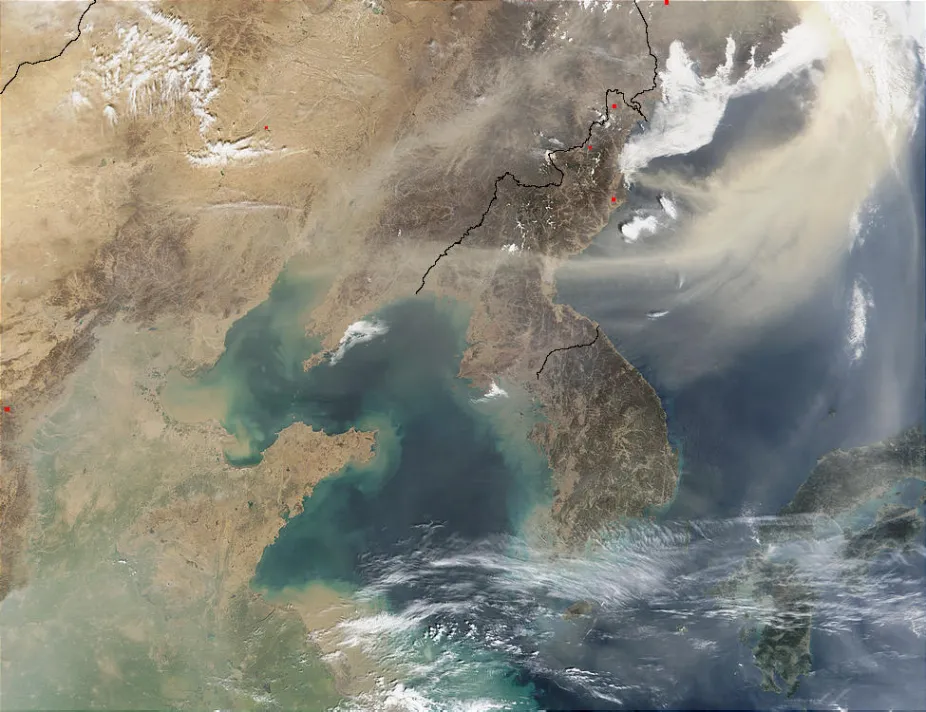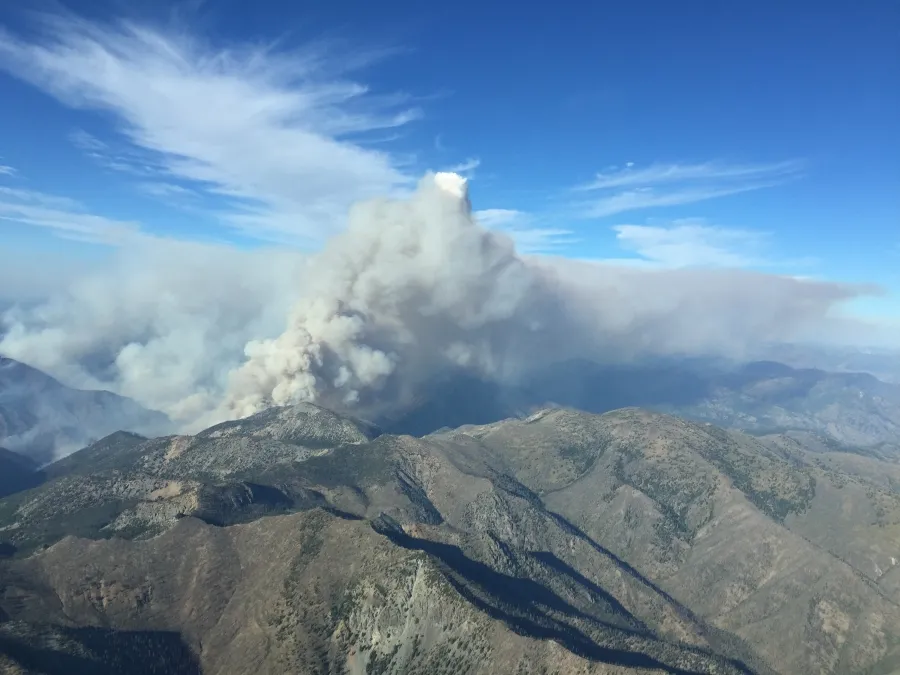How Weather Affects Air Quality
How is air pollution affected by weather? It depends — some types of pollution are worse in the summer heat, while others are worse in cold winter weather. The same atmospheric conditions that create weather — air pressure, temperature, and humidity — also affect air quality.
Wind and Air Pressure
Because air is almost always on the move, air pollution is easily transported from one area to another. For example, studies in the 1980s found that sulfur dioxide from coal burning in the Ohio Valley was carried across large distances by the wind. This caused acid rain to fall on regions of the eastern US and Canada up to a thousand miles away. Acid rain causes "dead lakes," where the acidic lake conditions prevent fish eggs from developing. Similar effects from coal burning have been found in Europe.

Yellow dust storm over Korea and the Sea of Japan (April 1, 2002)
NASA Goddard Space Flight Center
In Asia, powerful spring winds carry clouds of industrial pollutants from China across the Gobi Desert. As the contaminated winds cross the desert, they pick up particle pollution as well, causing massive yellow dust storms across the Korean Peninsula and parts of Japan. These yellow dust storms reduce visibility, damage plants and soils, and pose significant health risks to humans.
Low-pressure systems bring wet and windy conditions. A passing storm front can wash pollutants out of the atmosphere or transport them to a new area, producing clear skies. It is important to note, however, that the pollutants are not really gone — rather, they have been moved to a new location.
The opposite is true of high-pressure systems, which can create stagnant air. When the air stops moving, pollutants such as vehicle and factory exhaust concentrate over an area.
Temperature, Sunlight, and Humidity
Air temperature affects the movement of air, and thus the movement of air pollution. Because energy from the Sun is absorbed by the Earth's surface, air near the ground is warmer than air that is farther up in the troposphere. The warmer, lighter air at the surface rises, and the cooler, heavier air in the upper troposphere sinks. This is known as convection and it moves pollutants from the ground to higher altitudes.
Cold Weather
When the weather is cold, exhaust from vehicles, chimneys, and smokestacks is more visible. Does this mean that there are more pollutants in the air, or just that the warm vapor exhaust is more visible? Typically, both are true. While industrial emissions remain mostly constant throughout the year, particulate matter and carbon monoxide pollutants from wood burning increase during the cold winter months. Idling cars to defrost or keep them warm increases the amount of air pollution as well.

Rising, warm air often helps disperse pollution from near the surface (top), but in a temperature inversion the warm air cannot rise, trapping pollution at the surface (bottom).
EPA
Typically, warm rising air near the ground lifts pollution away, but during the winter the layer of warm air acts like a lid, keeping cold air at the surface. This creates a thermal inversion, which forms when a layer of warm air above traps cool air and pollution close to the ground. Thermal inversions are more common above cities where cold, dense air gets trapped in mountain basins or valleys, such as Los Angeles, Denver, and Mexico City.
Hot Weather
Some pollution, such as ground-level ozone, is made more efficiently in sunny, hot weather. The reactions that create harmful ozone in our atmosphere require sunlight. In the summers and especially during extreme heat waves, ozone often reaches dangerous levels in cities or nearby rural areas.
Thankfully, humidity can help to decrease ozone pollution. Afternoon thunderstorm clouds block sunlight, causing ozone production to slow down for the day, while moisture from the storm destroys the ozone that has formed.
Heat waves often lead to poor air quality. The extreme heat and stagnant air during a heat wave increase the amount of ozone pollution and particulate pollution. Drought conditions can also occur during a heat wave, meaning that soils are very dry. During a drought, forest fires are more common. Fires add carbon monoxide and particle pollution to the atmosphere.

The 2018 Kiwah fire in Idaho resulted from a lightning strike. Due to dry weather conditions, the fire persisted for over two months and covered just over 14,000 acres. Particulate matter and carbon monoxide pollution from fires create poor local air quality.
Frank Flocke